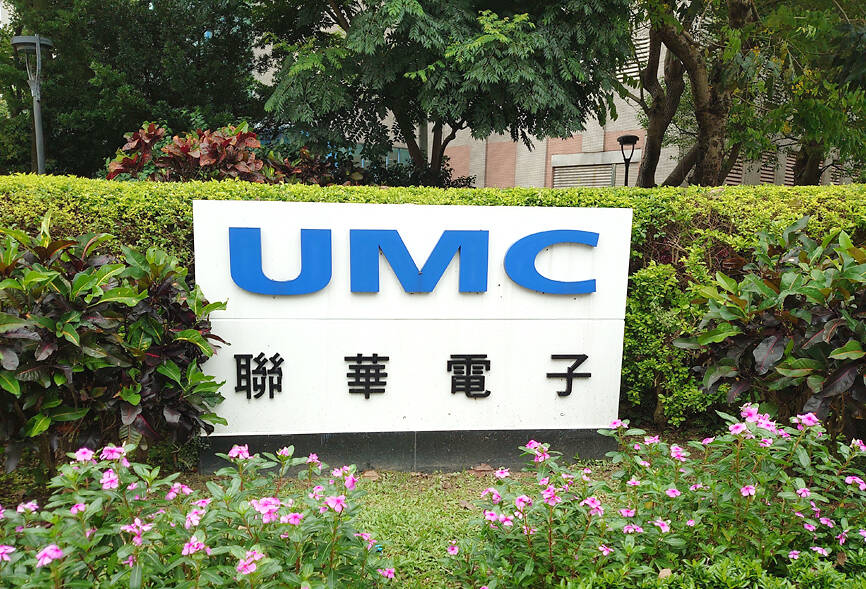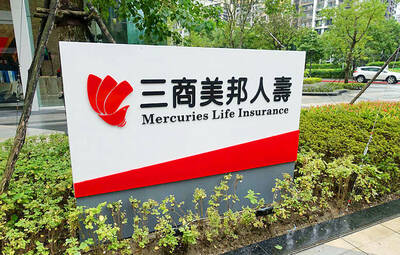United Microelectronics Corp (UMC, 聯電), the world’s No. 4 foundry service provider, on Wednesday reported that its net profit plummeted 35 percent year-on-year in the second quarter, as gross margin fell short of expectations due to the drastic appreciation of the New Taiwan dollar.
Net profit slid to NT$8.9 billion (US$297.5 million) during the June quarter, compared with NT$13.79 billion in the same quarter last year. Earnings per share dropped to NT$0.71 from NT$1.11.
Gross margin fell to 28.73 percent from 35.18 percent a year ago, missing the 30 percent target UMC set three months ago.

Photo: CNA
UMC said that a 6 percent increase in the NT dollar against the US greenback erased 3 percentage points from its gross margin last quarter, offsetting the positive effects of higher average selling prices and factory utilization rate.
The chipmaker booked NT$1.28 billion in foreign exchange losses last quarter, reversing a gain of NT$115 million a year ago.
“That is our mission, to continue improving gross margin back to the original level,” UMC copresident Jason Wang (王石) told a virtual investors’ conference on Wednesday. “Given the current loading, fluctuating at about 70 percent, it is definitely putting some pressure in terms of gross margin. And the depreciation cost increases as well.”
Equipment loading is a key factor affecting gross margin, Wang said.
The factory utilization rate is expected to stay at about 75 percent this quarter, similar to last quarter’s level, which is “not great,” he added.
Gross margin this quarter would still be subject to changes in foreign exchange rates, Wang said.
UMC expects the NT dollar to increase to NT$29.8 against the US dollar, up 3.28 percent from second-quarter assumption of NT$30.81.
The company also estimates that every 1 percent appreciation of the NT dollar would reduce gross margin by 0.4 to 0.5 percentage points.
Average selling prices are to hold steady this quarter from last quarter, UMC said.
Wafer shipments are projected to increase slightly by 2 or 3 percent quarter-on-quarter, due to cooling demand ahead of the implementation of US tariffs, it said.
UMC expects depreciation costs for its manufacturing equipment and facilities to peak, as such costs would only increase by a single-digit percent annually next year, following several years of 20 percent expansions, company chief financial officer Liu Chi-tung (劉啟東) said.
Wang said that the company believes it would outgrow its addressable semiconductor market, which is expected to grow slightly.
UMC’s collaboration with Intel Corp to develop 12-nanometer foundry services remains on track, even after new Intel CEO Lip-Bu Tan (陳立武) took the reins in March, UMC said.
The first process design kit would be ready for customers in June next year, paving the way for the 12-nanometer chip production in 2027, it added.

Mercuries Life Insurance Co (三商美邦人壽) shares surged to a seven-month high this week after local media reported that E.Sun Financial Holding Co (玉山金控) had outbid CTBC Financial Holding Co (中信金控) in the financially strained insurer’s ongoing sale process. Shares of the mid-sized life insurer climbed 5.8 percent this week to NT$6.72, extending a nearly 18 percent rally over the past month, as investors bet on the likelihood of an impending takeover. The final round of bidding closed on Thursday, marking a critical step in the 32-year-old insurer’s search for a buyer after years of struggling to meet capital adequacy requirements. Local media reports

TECHNOLOGICAL RIVALRY: The artificial intelligence chip competition among multiple players would likely intensify over the next two years, a Quanta official said Quanta Computer Inc (廣達), which makes servers and laptops on a contract basis, yesterday said its shipments of artificial intelligence (AI) servers powered by Nvidia Corp’s GB300 chips have increased steadily since last month, should surpass those of the GB200 models this quarter. The production of GB300 servers has gone much more smoothly than that of the GB200, with shipments projected to increase sharply next month, Quanta executive vice president Mike Yang (楊麒令) said on the sidelines of a technology forum in Taipei. While orders for GB200 servers gradually decrease, the production transition between the two server models has been

US sports leagues rushed to get in on the multi-billion US dollar bonanza of legalized betting, but the arrest of an National Basketball Association (NBA) coach and player in two sprawling US federal investigations show the potential cost of partnering with the gambling industry. Portland Trail Blazers coach Chauncey Billups, a former Detroit Pistons star and an NBA Hall of Famer, was arrested for his alleged role in rigged illegal poker games that prosecutors say were tied to Mafia crime families. Miami Heat guard Terry Rozier was charged with manipulating his play for the benefit of bettors and former NBA player and

BETTER THAN EXPECTED: The firm’s Q3 results exceeded its projections, based on ‘the underlying strength of our core markets,’ chief financial officer Dave Zinsner said Intel Corp returned to profitability and gave an upbeat revenue forecast after PC demand grew, suggesting that it is making progress on a long and challenging comeback attempt. In the third quarter, revenue rose 3 percent to US$13.7 billion. The Santa Clara, California-based company posted its first quarterly net income since the end of 2023, with earnings per share of US$0.23, excluding some items. Analysts had estimated sales of US$13.2 billion and earnings per share of US$0.01 on average, according to data compiled by Bloomberg. Fourth-quarter sales would be roughly US$13.3 billion, the company said in a statement on Thursday. Intel shares gained about